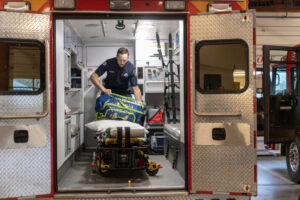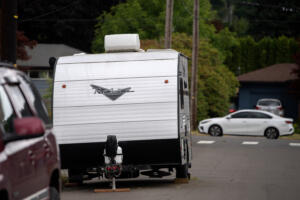A Washougal area woman who lives near Washougal River Road is used to seeing eagles, raccoons and deer near her residence, but is puzzled and concerned about the most recent wildlife addition to her backyard.
Nataliya “Natasha” Milushkina said she first noticed the animal in late October, around 9:30 p.m., near her carport. She believed then — and still does — that it was a cougar on her property.
“I hear this meowing, and it was behind my car,” she recalled. “I froze. That thing backed off. I acted bigger than it, and I grabbed a shovel.”
The following day, Milushkina saw the same animal’s eyes peering from brush and trees in her backyard when she took her garbage out.
“He did not move,” she said. “It was scary. It was just really, really scary.”





